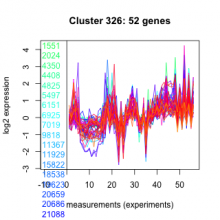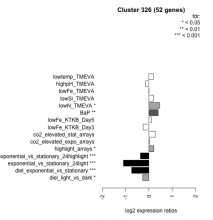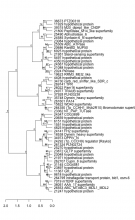25490 Abhydrolase_6Thalassiosira pseudonana
| Chromosome | Product | Transcript Start | End | Strand | Short Name | |
|---|---|---|---|---|---|---|
| 25490 | chr_19a_19 | Abhydrolase_6 | 493626 | 497048 | - | Abhydrolase_6 |
| NCBI ID | Ensembl Genomes exon ID |
|---|---|
| 7449941 | Thaps25490.4, Thaps25490.2, Thaps25490.1, Thaps25490.3, Thaps25490.5 |
| Expression Profile | Conditional Changes | Cluster Dendrogram | Discovered Potential cis-Regulatory Motifs |
|---|---|---|---|
Thaps_hclust_0326 |
 |
 |
   |
| T. pseudonana | P. tricornutum | P. tricornutum DiatomCyc | F. cylindrus | Pseudo-nitzschia multiseries | E. huxleyi | C. reinhardtii | A. thaliana | P. sojae |
|---|---|---|---|---|---|---|---|---|
| Not available | PHATRDRAFT_45583 | PHATRDRAFT_45583 | 234199 | 326637 | Not available | Not available | Not available | Not available |
| KEGG description | KEGG Pathway |
|---|---|
| Not available | Not available |

Add comment